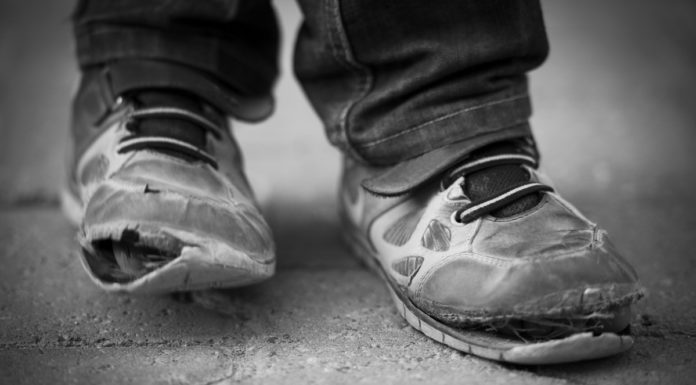
Disparities in health between rich and poor adolescents grew globally during the first decade of this century, according to a new study published in The Lancet. The findings, based on data from nearly half a million adolescents in 34 countries, reveal that socioeconomic disparities across multiple areas of adolescent mental and physical health increased between 2002 and 2010, with young people from the poorest socioeconomic groups more likely to be in poor health.
“A strong international focus on reducing child poverty and mortality in children under 5 years has not been matched by a similar response in older age groups, resulting in widening socioeconomic inequalities in adolescent health,” says Dr. Frank Elgar, the study’s lead author and a psychiatry professor at McGill University in Quebec, Canada. “If health inequalities are now widening in such abundantly rich countries, particularly during the so-called ‘healthy years’ of adolescence, then these trends are especially alarming for future population health.”
Health and health behaviors track strongly from early adolescence to adulthood, says Dr. Elgar, and inequalities in health are typically established early in life. Socioeconomic status is a major determinant of these inequalities — past research shows that growing up in impoverished and marginalized socioeconomic conditions shortens the lifespan and contributes to poor mental and physical health. Understanding these trends in health inequalities, and their social determinants, is crucial so that policy can be developed to address them, says Dr. Elgar.
For the study, Dr. Elgar’s team measured socioeconomic-related inequalities across five distinct areas of adolescent health:
- Physical activity
- Body mass index (BMI)
- Psychological symptoms (such as irritability, feeling low, feeling nervous)
- Physical symptoms (such as headache, stomach ache, backache, feeling dizzy and life satisfaction)
- Difficulty sleeping.
Changes in all of these areas were tracked over the study period of 2002-10. The study looked at nearly half a million adolescents from 34 countries across Europe and North America who were surveyed as part of the World Health Organization (WHO) Behavior in School-aged Children study in 2002, 2006 and 2010. The researchers also assessed to what extent inequalities in health between socioeconomic groups correlated with national wealth and inequality of income. In the study, socioeconomic status was measured using material assets and common indicators of wealth, such as owning a car.
Increased inequality across four of five health domains
Between 2002 and 2010, both improvements in health (i.e., increased physical activity and life satisfaction) and declines in health (increased body mass and physical symptoms) in young people were recorded. At the same time, the results showed that disparities in health between the least and the most well-off became larger. For example, the difference in amount of physical activity between the least and most affluent groups increased from 0.79 days to 0.83 days per week. Using a points system, the researchers measured other increases in disparities between poorest and richest, including:
- BMI (0.15 point difference between poorest and richest in 2002, increased to 0.18 in 2010)
- Psychological symptoms (0.58 increased to 0.67)
- Physical symptoms (0.21 increased to 0.26).
Only in life satisfaction did inequality decline, from a 0.98 point difference in 2002 to a 0.95 point difference in 2010.
The research also showed that adolescents living in countries with greater income inequality were less physically active had higher body mass index, lower life satisfaction, and reported more psychological and physical symptoms. Young people in these countries also had larger health inequalities between socioeconomic groups in psychological and physical symptoms and life satisfaction.
Findings ‘lead to a grim prediction about future population health’
Given the link between adolescent and adult health, Dr. Elgar fears the study’s findings could have dire implications for the future if nothing is done to address the causes of these growing inequalities. “The many health and social problems that relate to economic inequality and the current global trends in rising economic inequality all lead to a grim prediction about future population health,” he said. “Health inequalities in youths shape future inequities in education, employment, adult health, and life expectancy, and should be a focus of health policy. Urgent action is needed to tackle inequities in health in adolescence.”
According to a recent Oxfam report, the 80 richest people in the world own more wealth than the poorest half of the world’s population put together, or more than 3.5 billion people. Unless the current trend of rising inequality is addressed immediately, the combined wealth of the richest 1 percent is projected overtake that of the other 99 percent of the world’s population next year (2016). Increasing evidence from scientific studies conducted in countries around the world indicates that economic inequality is a significant determinant of health outcomes ranging from life expectancy and premature death to infant mortality and obesity. Even modest increases in economic inequality are associated with more than double the cumulative risk of death over a 12-year period. The negative consequences of inequality extend to mental health, as well.
The authors suggest that health policy needs to look beyond average levels of population health and disease prevalence to tackle unjust inequities in health across these increasingly disparate socioeconomic conditions. For example, a focus on increasing physical activity for adolescents in general could obscure the need to tackle inequality in physical activity, which has also increased. “Our results also point to policy options for governments that could help reduce health inequalities early in the life course, such as reducing economic inequality or investing in the health of disadvantaged youth,” added Dr. Elgar. “To improve health and reduce health disparities across the lifespan, a focus should be on social factors that affect the health and wellbeing of young people.”
